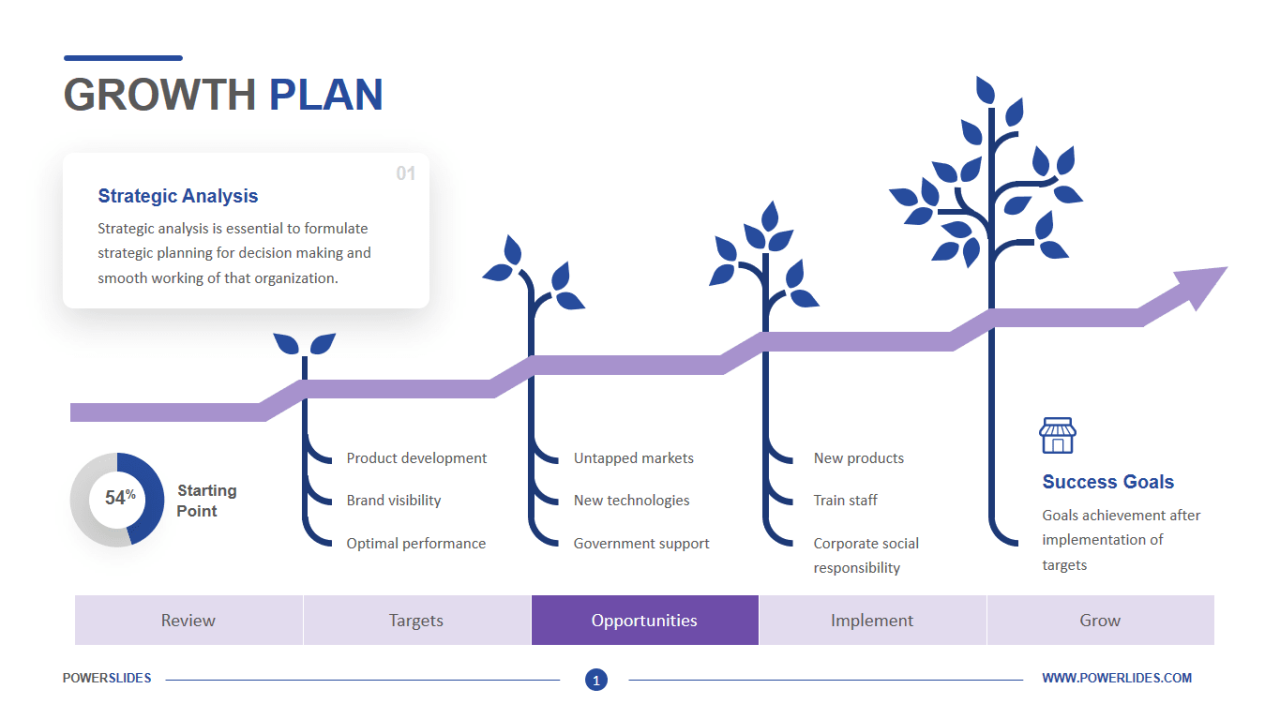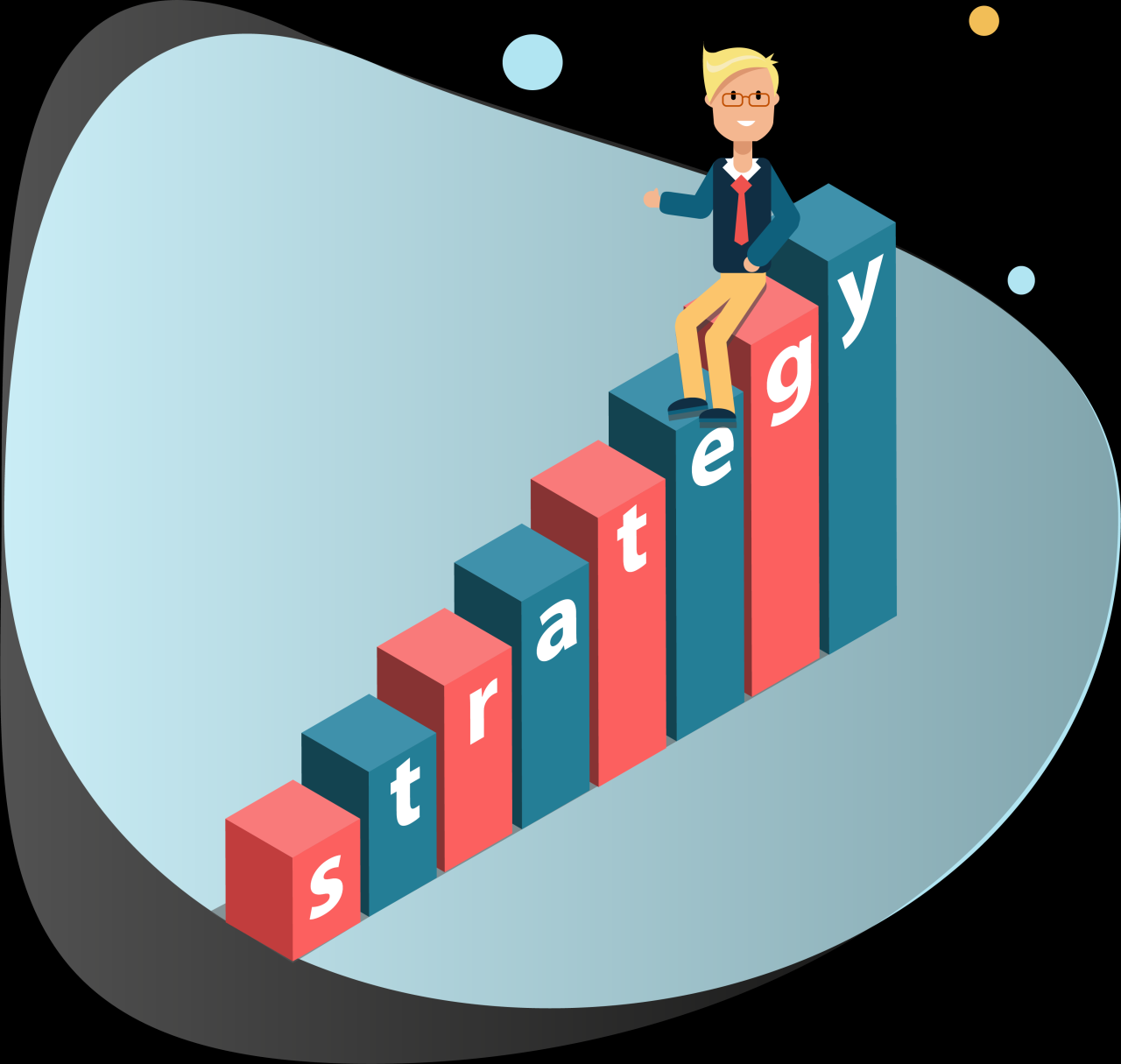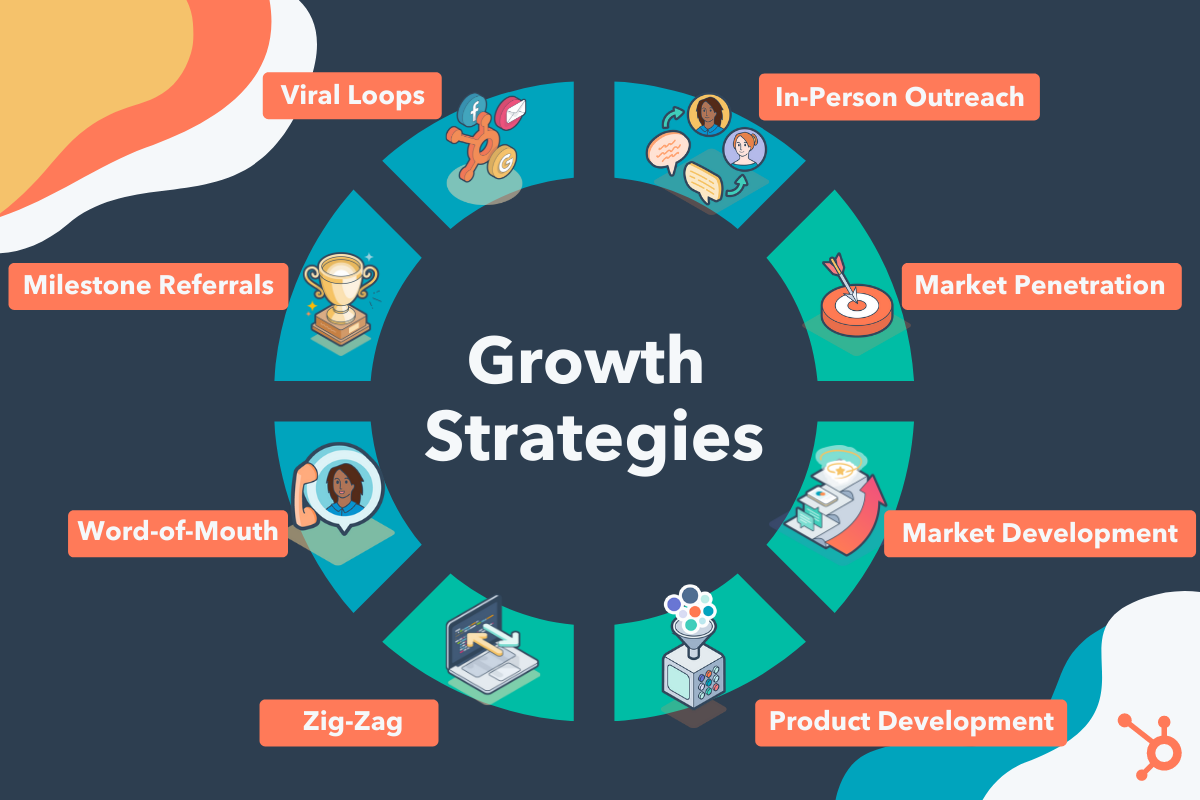Business scaling strategy is more than just growth; it’s a carefully orchestrated evolution. This guide delves into the multifaceted aspects of expanding your business, from defining ambitious goals and analyzing market opportunities to securing funding and building a robust team. We’ll explore various scaling models, highlighting the importance of strategic resource allocation and operational efficiency to ensure sustainable and profitable growth.
Successfully scaling a business requires a proactive and adaptable approach. This involves not only understanding your market and competition but also anticipating potential challenges and developing robust contingency plans. We’ll cover crucial elements like financial planning, technological integration, and risk management, providing a practical framework for navigating the complexities of expansion.
Defining Business Scaling Goals
Successfully scaling a business requires a clear understanding of your objectives. Without well-defined goals, expansion efforts can become unfocused and inefficient, leading to wasted resources and missed opportunities. This section Artikels three distinct scaling goals, each with its own growth trajectory and key performance indicators (KPIs).
Three Distinct Business Scaling Goals
Businesses can pursue different scaling strategies depending on their resources, market position, and overall ambition. Three common approaches are rapid expansion, sustainable growth, and focused niche market dominance. Each demands a unique approach to resource allocation and performance measurement.
Rapid Expansion
Rapid expansion prioritizes aggressive growth, often characterized by rapid market penetration and a significant increase in market share within a short timeframe. This strategy typically involves significant investment in marketing, sales, and potentially acquisitions. It’s a high-risk, high-reward approach that can lead to substantial gains but also carries the risk of overextension and financial instability if not managed carefully. Examples include companies like Uber and Airbnb, which experienced explosive growth in their early years by rapidly expanding into new markets.
Sustainable Growth
Sustainable growth focuses on building a strong foundation for long-term success. This approach emphasizes profitability, operational efficiency, and customer retention over rapid expansion. It often involves a more gradual scaling process, prioritizing organic growth and careful resource management. Companies pursuing this strategy typically invest heavily in improving their operational processes, building strong customer relationships, and creating a sustainable business model. Patagonia, known for its commitment to environmental sustainability and ethical practices, exemplifies this approach.
Focused Niche Market Dominance
Focused niche market dominance involves concentrating resources on a specific, well-defined segment of the market. The goal is to become the leading provider within that niche, commanding a significant market share and achieving high profitability. This strategy requires a deep understanding of the target market’s needs and preferences, as well as the ability to develop specialized products or services that meet those needs effectively. A company specializing in high-end, handcrafted furniture would be an example of this type of scaling strategy.
Key Performance Indicators (KPIs) for Measuring Success
Each scaling goal requires distinct KPIs to accurately measure progress and identify areas for improvement.
KPIs for Rapid Expansion
Rapid expansion relies heavily on metrics reflecting market penetration and revenue growth. Key KPIs include: Market share growth, Customer acquisition cost (CAC), Revenue growth rate, and Number of new customers acquired.
KPIs for Sustainable Growth
Sustainable growth prioritizes long-term profitability and operational efficiency. Key KPIs include: Customer lifetime value (CLTV), Customer churn rate, Net profit margin, and Return on investment (ROI).
KPIs for Focused Niche Market Dominance
Success in a niche market is measured by market dominance and profitability within that specific segment. Key KPIs include: Market share within the niche, Average revenue per user (ARPU), Customer satisfaction within the niche, and Brand awareness within the niche.
Resource Allocation Strategies
The resources required for each scaling strategy differ significantly.
| Scaling Goal | Marketing & Sales | Research & Development | Operations & Infrastructure |
|---|---|---|---|
| Rapid Expansion | High investment in aggressive marketing campaigns and sales teams. | Moderate investment, focusing on rapid product iteration and adaptation. | High investment in scaling infrastructure and logistics to handle increased demand. |
| Sustainable Growth | Moderate investment in targeted marketing and customer relationship management (CRM). | Moderate investment in product improvement and innovation. | High investment in process optimization and operational efficiency. |
| Focused Niche Market Dominance | Targeted marketing efforts focused on the specific niche. | High investment in specialized product development and innovation within the niche. | Moderate investment in efficient operations tailored to the niche market. |
Market Analysis and Opportunity Assessment
Understanding the market landscape and identifying lucrative opportunities are crucial for successful business scaling. A thorough market analysis allows for strategic resource allocation and informed decision-making, ultimately maximizing the chances of achieving ambitious growth targets. This section details a potential market analysis for expansion, focusing on identifying suitable segments, analyzing the competitive landscape, and comparing the market size and profitability of each segment.
Potential Market Segments for Expansion
Identifying suitable market segments requires a deep understanding of customer needs, preferences, and purchasing behaviors. Three potential segments, chosen based on growth potential and alignment with the company’s strengths, are presented below. Each segment represents a distinct opportunity for expansion, requiring a tailored approach to marketing and sales.
- Segment 1: High-Value Enterprise Clients: This segment focuses on large corporations with significant budgets and a need for high-quality, customized solutions. The rationale for selecting this segment is based on the potential for high-profit margins and long-term contracts. These clients often prioritize reliability and a strong track record, aligning well with our established reputation.
- Segment 2: Small and Medium-Sized Businesses (SMBs) in a Niche Market: Targeting SMBs within a specific niche market allows for focused marketing efforts and a strong competitive advantage. The rationale is that these businesses often have specific needs not adequately met by larger competitors, allowing us to establish ourselves as a specialized provider.
- Segment 3: International Markets with High Growth Potential: Expanding into international markets with high growth potential presents a significant opportunity for revenue diversification and scale. The rationale for this selection is based on the potential to reach new customers and tap into untapped demand in emerging economies.
Competitive Landscape Analysis
Understanding the competitive landscape within each chosen segment is vital for developing effective strategies. This analysis identifies both direct and indirect competitors and assesses their strengths and weaknesses.
- Segment 1: High-Value Enterprise Clients: Direct competitors in this segment include established industry leaders with extensive resources and market share. Indirect competitors might include companies offering substitute solutions or alternative approaches to achieving similar business outcomes. Competitive advantages can be achieved through superior customer service, innovative technology, and strategic partnerships.
- Segment 2: SMBs in a Niche Market: Direct competitors within this niche are likely to be smaller, specialized businesses. Indirect competition might stem from larger companies offering broader solutions that partially address the niche needs. Competitive advantage in this segment can be built through specialized expertise, strong customer relationships, and targeted marketing.
- Segment 3: International Markets: Direct competitors in international markets will vary depending on the specific geographic location. Indirect competition may include local players, established international brands, and substitute products or services. Success in this segment will depend on adapting to local market conditions, navigating regulatory hurdles, and building strong local partnerships.
Market Size and Potential Profitability Comparison
A visual representation, in the form of a bar chart, would effectively compare the market size and potential profitability of each segment.
| Segment | Market Size (Estimated) | Potential Profitability (High/Medium/Low) |
|---|---|---|
| High-Value Enterprise Clients | Large | High |
| SMBs in Niche Market | Medium | Medium |
| International Markets | Large (with significant variability) | Medium to High (depending on market entry strategy and execution) |
The chart would visually depict the relative sizes of each segment’s market, represented by the length of the bars, and use different colors to indicate the potential profitability level (e.g., green for high, yellow for medium, red for low). For example, the bar representing the “High-Value Enterprise Clients” segment would be long and green, indicating a large market size and high potential profitability. The “International Markets” segment would also have a long bar, but its color would reflect the medium to high profitability range, acknowledging the inherent variability and risk associated with international expansion. The “SMBs in Niche Market” segment would have a medium-length bar and a yellow color, representing a medium market size and medium profitability potential. This visual representation provides a clear and concise comparison of the three segments.
Resource Allocation and Capacity Planning

Scaling a business successfully hinges on effectively allocating resources and proactively managing capacity. This involves a strategic approach to financial investments, human capital deployment, and technological infrastructure upgrades, all carefully synchronized to meet the demands of growth. Ignoring this crucial aspect can lead to bottlenecks and ultimately hinder the scaling process.
A well-defined resource allocation plan is essential for navigating the complexities of business expansion. It requires a thorough understanding of current resource levels, projected needs based on scaling goals, and a clear prioritization scheme for resource deployment across various business functions.
Financial Resource Allocation
Strategic financial allocation requires a detailed budget outlining projected expenditures across different phases of scaling. This includes investments in marketing and sales to expand market reach, operational improvements to enhance efficiency, research and development to maintain a competitive edge, and technology upgrades to support increased operational capacity. For instance, a company anticipating a 50% increase in sales might allocate 20% of its budget to expanding its sales team, 15% to upgrading its customer relationship management (CRM) system, and 10% to targeted marketing campaigns. This detailed breakdown ensures funds are directed towards the most impactful areas, maximizing return on investment.
Effective business scaling strategy requires a holistic approach. It’s not just about increasing profits; a crucial element is fostering a positive work environment where employees feel valued and engaged. This often involves focusing on well-being, and understanding how to improve daily happiness, as detailed in this helpful guide: Cara meningkatkan kebahagiaan sehari-hari. Ultimately, a happier, healthier workforce contributes significantly to a company’s long-term success and sustainable scaling.
Human Resource Allocation
Scaling requires a strategic approach to human capital. This goes beyond simply hiring more people; it necessitates attracting, retaining, and developing talent aligned with the company’s growth trajectory. This involves identifying skill gaps, creating effective recruitment strategies, implementing comprehensive training programs, and fostering a positive work environment that promotes employee engagement and retention. For example, a company expanding into a new geographic market might recruit local sales representatives with strong market knowledge, complementing this with training programs to ensure consistency in brand messaging and sales processes.
Effective business scaling strategy requires laser focus and meticulous planning. Maintaining this concentration can be challenging, so incorporating techniques for improved focus is crucial. For helpful strategies on enhancing concentration, check out these excellent tips on improving study concentration: Tips meningkatkan konsentrasi belajar. Applying these principles to your business goals can significantly improve your ability to execute your scaling strategy effectively and efficiently.
Technological Resource Allocation
Technology plays a crucial role in supporting business scaling. This includes investments in infrastructure, software, and automation tools to improve efficiency, enhance productivity, and enable better data-driven decision-making. For example, a company experiencing rapid order growth might invest in an automated order fulfillment system to reduce processing time and improve accuracy, while also upgrading its data analytics capabilities to better understand customer behavior and optimize inventory management. Failure to invest in appropriate technology can quickly become a significant bottleneck as the business grows.
Potential Bottlenecks and Mitigation Strategies
Identifying and addressing potential bottlenecks is critical for successful scaling. Common bottlenecks include inadequate infrastructure, insufficient staffing, limited technological capabilities, and inefficient processes. Proactive mitigation strategies are essential to prevent these bottlenecks from hindering growth.
| Bottleneck | Mitigation Strategy |
|---|---|
| Inadequate Infrastructure (e.g., insufficient server capacity, limited office space) | Invest in scalable infrastructure solutions, explore cloud computing, secure additional office space or implement remote work policies. |
| Insufficient Staffing (e.g., lack of skilled employees, high employee turnover) | Develop a robust recruitment and retention strategy, invest in employee training and development, offer competitive compensation and benefits packages. |
| Limited Technological Capabilities (e.g., outdated software, lack of automation) | Invest in modern technology, implement automation tools, provide training to employees on new technologies. |
| Inefficient Processes (e.g., manual data entry, slow order fulfillment) | Streamline processes, implement automation tools, improve workflow management, and invest in process optimization initiatives. |
Assessing and Enhancing Operational Capacity, Business scaling strategy
A step-by-step approach is crucial for assessing and enhancing operational capacity. This involves a thorough analysis of current processes, identification of capacity constraints, and the implementation of strategies to improve efficiency and scalability.
- Analyze Current Capacity: Conduct a comprehensive review of existing operational processes, identifying current throughput, bottlenecks, and areas for improvement.
- Forecast Future Demand: Project future demand based on sales forecasts and market analysis. This involves considering factors such as seasonality, market trends, and planned marketing campaigns.
- Identify Capacity Gaps: Compare projected future demand with current capacity to identify potential shortfalls in resources, infrastructure, or processes.
- Develop Capacity Enhancement Plan: Create a detailed plan outlining strategies to address identified capacity gaps. This may involve investing in new technology, hiring additional staff, improving processes, or outsourcing certain functions.
- Implement and Monitor: Implement the capacity enhancement plan and continuously monitor its effectiveness. Track key performance indicators (KPIs) to measure progress and make necessary adjustments.
Financial Strategies for Scaling

Securing adequate funding is paramount for successful business scaling. The choice of funding strategy significantly impacts a company’s growth trajectory, risk profile, and long-term financial health. Careful consideration of various options is crucial to align funding with the business’s specific needs and goals.
Funding Strategies for Business Scaling
Three common funding strategies for scaling businesses are bootstrapping, venture capital, and debt financing. Each approach presents unique advantages and disadvantages concerning risk, control, and long-term financial implications. Understanding these nuances is vital for making informed decisions.
Bootstrapping
Bootstrapping involves funding a business’s growth using only its internal resources, such as revenue generated from sales and reinvesting profits. This approach minimizes reliance on external investors, preserving greater control over the company’s direction. For example, a small bakery might reinvest profits from increased sales to purchase new ovens and expand its production capacity, gradually growing without external debt or equity investment. This strategy is typically characterized by slow, organic growth.
Venture Capital
Venture capital involves raising capital from specialized investment firms that provide funding in exchange for equity in the company. Venture capitalists typically invest in high-growth potential businesses with innovative ideas and strong management teams. A tech startup developing a groundbreaking software solution might secure venture capital funding to accelerate product development, expand its marketing efforts, and scale its operations rapidly. This strategy offers rapid growth potential but often comes with a dilution of ownership and a loss of control.
Debt Financing
Debt financing involves borrowing money from lenders, such as banks or other financial institutions, to fund business growth. This approach allows businesses to retain ownership but incurs debt obligations that must be repaid with interest. A manufacturing company looking to expand its production facility might obtain a bank loan to finance the construction and equipment purchases. While debt financing provides leverage for rapid growth, it carries the risk of financial distress if the business fails to generate sufficient revenue to cover debt payments.
Comparison of Funding Strategies
The following table summarizes the key characteristics of each funding strategy:
| Funding Strategy | Advantages | Disadvantages | Risk Level |
|---|---|---|---|
| Bootstrapping | Maintains control, avoids debt, slower growth, minimal dilution | Slow growth, limited funding, potential missed opportunities | Low |
| Venture Capital | Rapid growth, significant funding, access to expertise | Dilution of ownership, loss of control, high pressure to meet investor expectations | Medium to High |
| Debt Financing | Retains ownership, predictable repayment schedule | Debt burden, interest payments, risk of default | Medium |
Operational Efficiency and Process Improvement: Business Scaling Strategy

Scaling a business requires more than just increasing sales; it demands a significant boost in operational efficiency. Without streamlining processes and improving workflows, rapid growth can quickly overwhelm existing systems, leading to bottlenecks, errors, and ultimately, decreased profitability. This section identifies key operational areas ripe for improvement and Artikels strategies for achieving significant gains in efficiency.
Order Fulfillment Optimization
Improving order fulfillment is crucial for scaling. Inefficient processes in this area directly impact customer satisfaction and operational costs. Delays, errors, and high shipping costs all negatively affect the bottom line. Automating order processing, inventory management, and shipping can significantly reduce errors and lead times. Implementing a Warehouse Management System (WMS) allows for real-time tracking of inventory, automated picking and packing, and optimized warehouse layouts. This system can integrate with the company’s e-commerce platform to automate order updates and shipping notifications, reducing manual intervention and potential errors. For example, a company transitioning from manual order processing to a WMS saw a 20% reduction in order fulfillment time and a 15% decrease in shipping costs within six months. This translates directly into increased customer satisfaction and improved profitability.
Customer Service Enhancement
As a business scales, the volume of customer inquiries increases exponentially. Failing to address this growth effectively can lead to frustrated customers, negative reviews, and damage to brand reputation. Implementing a robust customer relationship management (CRM) system is vital. A CRM system centralizes customer data, allowing for personalized interactions and efficient handling of inquiries. Integrating a help desk ticketing system with the CRM further streamlines support, enabling efficient tracking and resolution of issues. Self-service options like a comprehensive FAQ section on the company website and automated email responses to common queries can also significantly reduce the burden on customer service representatives. Consider a company that implemented a chatbot for initial customer inquiries. This resulted in a 30% reduction in calls to the customer service department, freeing up representatives to handle more complex issues and improve response times.
Marketing and Sales Process Automation
Efficient marketing and sales are paramount for sustained growth. Manual processes are often slow, prone to errors, and lack the scalability needed for rapid expansion. Automating lead generation, nurturing, and sales follow-up processes through marketing automation software is key. This allows for targeted campaigns, personalized messaging, and efficient lead qualification. Furthermore, integrating sales and marketing data provides valuable insights into customer behavior, enabling data-driven decision-making. For instance, a company using marketing automation software to nurture leads saw a 50% increase in conversion rates. This is due to the ability to target specific customer segments with tailored messages at the right time, increasing engagement and ultimately, sales.
Team Building and Talent Acquisition
Scaling a business requires more than just a great product or service; it demands a strong, adaptable team capable of handling increased responsibilities and workload. Building and retaining top talent is crucial for sustained growth and success during this critical phase. A well-structured team, equipped with the right skills and a shared vision, will be the engine driving your expansion.
Building a high-performing team during a scaling phase presents unique challenges. Rapid growth necessitates a strategic approach to recruitment, training, and retention to ensure the company culture remains strong and productive while maintaining high quality standards. Failing to address these aspects effectively can lead to burnout, decreased productivity, and ultimately, hinder the scaling process.
Recruiting and Retaining Top Talent
A robust talent acquisition strategy is essential for scaling effectively. This involves a multi-faceted approach encompassing proactive recruitment, competitive compensation and benefits packages, and a strong emphasis on employee development and retention. Attracting and keeping the best employees is a continuous process that requires consistent effort and investment.
The recruitment process should be streamlined and efficient to quickly identify and onboard qualified candidates. This involves utilizing a variety of channels, including online job boards, professional networking platforms, and employee referrals. Thorough screening and interview processes are crucial to ensure candidates possess not only the necessary skills but also the cultural fit required to thrive within the company. Furthermore, a competitive compensation and benefits package is essential for attracting and retaining top talent in a competitive market. This might include offering above-market salaries, comprehensive health insurance, paid time off, and professional development opportunities. Regular performance reviews and opportunities for advancement further contribute to employee satisfaction and retention. Investing in employee training and development programs demonstrates a commitment to employee growth and helps retain valuable team members.
Essential Skills and Qualities for Key Roles
The skills and qualities needed in key roles during a scaling phase differ depending on the specific function. However, certain attributes are universally valuable.
A table outlining essential skills and qualities for various key roles provides a clearer understanding:
| Role | Essential Skills | Essential Qualities |
|---|---|---|
| Sales Manager | Lead generation, sales strategy development, team management, CRM software proficiency | Strong communication, leadership, adaptability, resilience, results-oriented |
| Marketing Manager | Digital marketing, content creation, /SEM, analytics, social media marketing | Creativity, analytical thinking, problem-solving, collaboration, data-driven decision-making |
| Operations Manager | Process improvement, project management, supply chain management, logistics | Organizational skills, attention to detail, problem-solving, efficiency, proactive |
| Software Engineer (example) | Coding proficiency (specific languages), software design, testing, debugging | Problem-solving, analytical skills, attention to detail, teamwork, continuous learning |
Prioritizing these skills and qualities during the recruitment process ensures the company is assembling a team capable of navigating the challenges and opportunities associated with scaling. Regular training and development initiatives further enhance these skills and foster a culture of continuous improvement.
Technology and Infrastructure
Scaling a business effectively requires a robust and adaptable technological foundation. The right technology not only streamlines operations but also unlocks new avenues for growth and efficiency, enabling faster response times, improved customer service, and ultimately, increased profitability. Ignoring technological advancements can severely limit a company’s ability to compete and scale successfully.
Technology plays a crucial role in facilitating business scaling by automating processes, improving data analysis, enhancing communication, and providing access to new markets. It allows businesses to manage increasing volumes of data, serve a larger customer base, and respond more quickly to changing market demands. Efficient technology also allows for better resource allocation, optimized workflows, and enhanced decision-making.
Key Technology Investments for Improved Efficiency and Scalability
Strategic technology investments are vital for achieving sustainable business growth. The following three areas represent significant opportunities for enhancing efficiency and scalability:
- Cloud-based solutions: Migrating to a cloud infrastructure offers scalability, flexibility, and cost-effectiveness. This allows businesses to easily adjust their computing resources based on demand, avoiding the upfront investment and maintenance associated with on-premise servers. For example, a rapidly growing e-commerce company can leverage cloud services to seamlessly handle peak traffic during sales events without significant infrastructure overheads.
- Customer Relationship Management (CRM) systems: A robust CRM system is essential for managing customer interactions, tracking sales leads, and personalizing the customer experience. As a business scales, a centralized CRM system ensures consistent service across all channels and facilitates efficient data analysis to inform marketing and sales strategies. Companies like Salesforce have proven successful in supporting large-scale customer relationship management across diverse industries.
- Enterprise Resource Planning (ERP) software: ERP systems integrate various business functions, including finance, human resources, supply chain management, and manufacturing. Implementing an ERP system streamlines operations, improves data visibility, and enhances collaboration across departments. This is particularly crucial during scaling as it allows for better coordination and resource allocation across the expanding organization. Companies such as SAP and Oracle provide comprehensive ERP solutions tailored to various business needs and scales.
Technology Implementation and Integration Plan
A phased approach to technology implementation is crucial for minimizing disruption and maximizing the return on investment. This plan Artikels a structured approach:
- Assessment and Planning: Begin by conducting a thorough assessment of the current IT infrastructure, identifying gaps and limitations. This involves evaluating existing systems, assessing employee skills, and defining clear business objectives for technology adoption. A detailed project plan should be developed, outlining timelines, responsibilities, and budget allocation.
- Selection and Procurement: Based on the assessment, select appropriate technologies that align with business needs and budget constraints. This involves researching different vendors, comparing features and pricing, and negotiating contracts. The procurement process should also include thorough due diligence to ensure compatibility with existing systems.
- Implementation and Training: Implement the chosen technologies in phases, starting with pilot programs to test functionality and identify potential issues. Comprehensive training programs should be provided to employees to ensure they can effectively utilize the new systems. Ongoing support and maintenance are essential to address any technical problems and ensure system uptime.
- Integration and Optimization: Integrate the new technologies with existing systems to create a cohesive and efficient workflow. This may involve custom development or utilizing integration platforms. Continuous monitoring and optimization are crucial to ensure the technologies are meeting business needs and maximizing their potential. Regular performance reviews and adjustments will be vital to ensure the continued efficiency of the integrated systems.
Risk Management and Contingency Planning

Scaling a business, while exciting, introduces inherent risks. A proactive approach to risk management is crucial for navigating these challenges and ensuring sustainable growth. Failing to anticipate and mitigate potential problems can lead to significant setbacks, wasted resources, and even business failure. This section Artikels potential risks, mitigation strategies, and a contingency plan framework.
Potential Risks Associated with Business Scaling
Three significant risks associated with business scaling are: financial strain due to rapid expansion, operational inefficiencies stemming from increased complexity, and difficulties in maintaining consistent brand quality and customer service. These risks, if not properly addressed, can severely hamper growth and potentially jeopardize the entire venture.
Financial Strain Due to Rapid Expansion
Rapid expansion often requires substantial upfront investment in infrastructure, personnel, and marketing. This can lead to cash flow shortages, especially if revenue growth doesn’t keep pace with expenses. For example, a company might invest heavily in new equipment or a larger office space before seeing a corresponding increase in sales, resulting in a significant financial burden.
Mitigation Strategy: Financial Strain
A robust mitigation strategy involves meticulous financial planning, securing sufficient funding, and implementing strong financial controls. This includes developing detailed financial projections, exploring various funding options (e.g., loans, equity financing, grants), and establishing regular financial monitoring mechanisms to track cash flow and identify potential problems early. Implementing cost-effective strategies, prioritizing high-return investments, and maintaining a healthy reserve fund are also critical. A detailed budget, regularly reviewed and adjusted, is essential.
Operational Inefficiencies Due to Increased Complexity
As a business scales, its operations become more complex. Managing a larger team, handling increased order volumes, and coordinating multiple departments can lead to inefficiencies, bottlenecks, and decreased productivity. This can manifest as longer lead times, higher error rates, and decreased customer satisfaction. Consider a retail company rapidly expanding its online presence; inadequate inventory management could lead to stockouts or overstocking, both of which are costly.
Mitigation Strategy: Operational Inefficiencies
Improving operational efficiency requires streamlining processes, investing in technology, and implementing robust systems for tracking and managing tasks. This includes automating repetitive tasks, improving communication and collaboration across departments, and leveraging technology such as enterprise resource planning (ERP) systems. Regular process reviews and employee training are also vital to identify and address inefficiencies. Implementing key performance indicators (KPIs) allows for tracking progress and identifying areas needing improvement.
Difficulties in Maintaining Consistent Brand Quality and Customer Service
Scaling often involves delegating tasks and expanding the workforce. This can lead to inconsistencies in product quality, customer service, and brand messaging. For instance, a restaurant chain expanding rapidly might experience inconsistencies in food quality and service across different locations, damaging its brand reputation.
Mitigation Strategy: Brand Consistency and Customer Service
Maintaining brand consistency requires establishing clear brand guidelines, implementing rigorous quality control measures, and providing comprehensive training to employees. This includes developing detailed style guides, standardized operating procedures, and customer service protocols. Regular customer feedback surveys and proactive monitoring of online reviews can help identify and address issues before they escalate. Investing in employee training programs focused on brand values and customer service excellence is also crucial.
Contingency Planning
A comprehensive contingency plan should address potential disruptions to operations, including supply chain issues, unexpected economic downturns, or unforeseen events (e.g., natural disasters). The plan should Artikel alternative courses of action to minimize the impact of these challenges. This includes identifying backup suppliers, developing alternative marketing strategies, and having a crisis communication plan in place. Regularly reviewing and updating the contingency plan is essential to ensure its effectiveness.
Final Conclusion

Ultimately, a successful business scaling strategy hinges on a clear vision, meticulous planning, and the ability to adapt to changing circumstances. By thoughtfully considering the key elements Artikeld in this guide—from defining your goals and assessing market opportunities to building a strong team and managing risks—you can position your business for sustainable and profitable growth. Remember, scaling isn’t just about getting bigger; it’s about getting better, stronger, and more resilient.